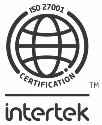How to Combine Health Tech with Insurtech

The integration of health technology (health tech) into the life insurance industry represents a significant shift towards more personalized, efficient, and effective services.
Insurance companies integrating with safe, secure, and reliable health tech are already reaping the rewards. Also known as the Internet of Medical Things (or IoMT), the health tech industry is expected to reach a global market size of around $239 billion USD by 2030. Additionally, Artificial Intelligence (AI) is rapidly evolving digital health. Predictive analytics and personalized medicine, two areas where AI is particularly well-suited, are already transforming healthcare delivery through more accurate diagnosis and individualized treatment plans.
In this article, we explore how health tech innovation aligns with smart Insurtech. Read on to discover how to combine the technologies to scale for future success with the INSTANDA platform.
What is Health Tech?
According to the World Health Organization, health technology is the application of organized knowledge and skills in the form of devices, medicines, vaccines, procedures and systems developed to solve a health problem and improve quality of life.
Health tech includes wearable devices, mobile health apps, telemedicine, electronic health records (EHRs), and more, all designed to monitor, analyze, and improve peoples' health and wellness.
For life insurers, the adoption of health tech offers a wealth of opportunities to optimize operations, enhance risk assessment, and improve customer engagement and satisfaction. Traditionally, policyholders only engage with their insurance products at purchase, payment, and time of claim, providing very few touchpoints. Health tech provides additional interaction between insurers and policyholders by allowing insurers to offer ongoing, value-adding service, thus building brand loyalty.
How Does Health Tech Align with Smart Insurtech?
Today, most life insurance companies still rely on technologies that enable descriptive risk management by tracking customers’ physical data and annual medical check-ups (if and when that information is available).
But, in order to enable dynamic risk management, smart Insurtech solutions for the life insurance sector must evolve from tracking what happened in the past to predicting what can happen in the future to underwrite more accurately.
To achieve this, health tech and Insurtech can be combined to provide personalized solutions — with the help of predictive algorithms and powerful data analytics to provide valuable insights for insurance providers. Real-time data allows insurers to evolve with individual customers’ needs over time while taking into account specific risk models and offering a more personalized, predictive, and even preventive health insurance service.
What are the Benefits of Innovative Health Insurance Products?
With detailed health and wellness data available through health tech, life insurers can tailor insurance policies to an individual's specific needs and risk profile. This level of customization not only enhances the value provided to the customer but also aligns the premiums more closely with the actual risk being insured, potentially leading to lower costs for healthier individuals.
For end customers:
Innovative life insurance products can improve customer experience, establish greater trust, and foster credibility among customers.
Health tech enables insurers to maintain more frequent and meaningful interactions with policyholders. For example, through health and wellness apps, insurers can offer tips, reminders, and incentives to encourage healthier lifestyles.
This continuous engagement helps build a stronger relationship between the insurer and the insured, leading to higher customer satisfaction and loyalty. In fact, in Forrester’s annual index, consumers rank customer service, communication, and feeling respected by the company they’re engaging with as the biggest reasons for choosing an insurance provider.
For underwriters:
Combining smart Insurtech with health tech results in increased competitiveness in the marketplace. Compiling new data allows underwriters to do their job more effectively (and ultimately increase the profitability of the organizations they work for). Data-fueled insights lead to better policy cover and risk identification for customers in less time.
On top of that, digital health ecosystems also hold promise in improving administrative efficiency based on lower overhead costs and faster turnaround times for insurance companies. By seamlessly sharing data among all parties, there’s a strong foundation to reduce the need for manual processing or time-consuming data collection.
Use Cases of Smart Insurtech and Health Tech Innovation
Behavioural Analytics & Data
With granular data insights into customers’ lifestyles, insurers have the tools to get to know customers better and can shape policies and insurance cover to suit. In addition, localized big data can draw on data trends to provide area-specific wellness and safety information that considers environmental factors, such as pollution, solar strength, epidemiology, local safety alerts, and other relevant information.
Health & Wellness Apps
Many health apps are available for tablets and smartphones. With access to an AI assistant or a qualified medical professional, customers can get the information they need from the comfort of their own home at a convenient time.
Digital Wearables
Digital wearables, like smartwatches, enable a deeper, data-driven understanding of policyholders' health and lifestyle habits.
These devices track a wide range of biometric measurements—steps taken, type of activity, quality of sleep, and heart rate. Beyond personal health monitoring, they offer personalized insights, workout suggestions, and comprehensive health functions through a connected IoT ecosystem. This wealth of data is scaled, interpreted through applications, and subsequently shared with insurers and health professionals, opening the door to more personalized insurance policies and health advice.
It allows for real-time health monitoring, which can lead to preventative healthcare measures, potentially reducing the need for costly medical interventions. For insurers, this means an ability to more accurately assess risk, tailor policies to individual needs, and foster a closer, more supportive relationship with customers, ultimately driving down costs and improving health outcomes
How to Combine Health Tech and Insurtech
Connected devices and wearables are increasingly being recognized as a golden opportunity for insurers. This is simply because devices help insurers get to know their customers better and reward them with lower premiums. Health connectivity helps insurers better understand and exploit risk profiles, assess all elements and conditions and translate the data into a bespoke product.
But combining innovative insurance products and smart Insurtech is only one part of the puzzle. Customer engagement is key to success. True engagement is completely enveloped with customer trust regarding what their data is being used for and how they can turn access on/off.
Successfully harnessing customer data and Insurtech informs just-in-time policies and products that offer value to the end customer in a clear and transparent way while preserving precious company budget.
How the INSTANDA Platform Makes Health Tech Integration Simple
INSTANDA integrates with external medical underwriting and medical care provider selection. The platform is a no-code and completely configurable solution that seamlessly integrates with third-party data sources, workflow tools and existing systems.
INSTANDA allows insurers to:
Configure new products in days or weeks, rather than months or years
Easily configure forms and attachment rules
Simplify underwriting with flexible, configurable rules
Offer indicative quotes in real time
Personalize products and customer experiences
Integrate with other service partners (including IoTs) to enhance customer propositions
Discover an Insurance Platform that’s Trusted by Leading Insurers Worldwide
Whether digitizing an entire business and multiple books, taking a vertical slice of an existing business, or launching a new innovative product, INSTANDA provides everything needed for data migration and designing new products.
Get in touch with our team of friendly professionals to streamline your insurance life cycle today.
Kick-start your journey by requesting a demo of INSTANDA.





